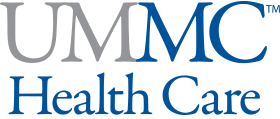Women's Pelvic Health and Reconstructive Surgery
Bowel Incontinence
The physicians and staff at University Women's Care are a team of caring professionals. Our providers have the expertise to treat even the most complex urogynecologic problems. We provide practiced, thoughtful care and work with our patients to find the most appropriate diagnosis and treatment to meet each woman's unique personal needs.
About bowel incontinence
Bowel or anal incontinence is the involuntary loss of feces or gas (flatus). This type of incontinence is usually associated with childbirth - whether recent or from many years in the past - which can injure the sphincter muscles of the anus. Gastrointestinal tract disorders such as diarrhea or constipation and rectal prolapse (rectocele) can also result in anal incontinence.
Types of bowel incontinence and associated conditions
- Anal incontinence
Involuntary loss of feces or flatus (intestinal gas) - Fecal incontinence
Involuntary loss of solid or liquid feces - Flatal incontinence
Involuntary loss of flatus (intestinal gas) - Fecal (rectal) urgency
A sudden, compelling need to defecate that is difficult to delay - Straining to defecate
Straining to either start, continue, or improve bowel movement (defecation) - Feeling of incomplete bowel evacuation
Not feeling empty after a bowel movement (defecation) - Constipation
Bowel movements (defecation) are infrequent, incomplete, and/or require frequent straining or manual assistance - Rectal prolapse
Part of the small intestine has fallen out of place and can be seen outside of the body, protruding from the anus either during bowel movements or all the time
Diagnosing bowel incontinence
Accurately diagnosing the cause of anal incontinence helps determine the most effective treatment for a woman's particular situation.
Tests used to diagnose the type of incontinence or to determine its cause include:
- Medical history and physical
- Stool samples/cultures
- Voiding diary
- Anal rectal manometry - Tests how well the anal sphincter muscles are working
- Pelvic ultrasound - Uses ultrasound to produce an image of pelvic organs and muscles
Treating bowel incontinence
Once a diagnosis is made, treatment focuses on the cause of the incontinence.
Treatments we offer
- Dietary changes
Certain foods and beverages change the consistency of stool or stimulation of the bowel. - Timed voiding
Trying to regulate the timing of bowel movements can help decrease accidents later in the day. - Medications
Two common medications used to treat anal incontinence:- Fiber
Fiber is a bulking agent and helps bind the stool together to allow for a more complete bowel movement. - Loperamide (Imodium® antidiarrheal)
Used to treat diarrhea, this medicine can be helpful in decreasing accidents.
- Fiber
- Biofeedback, with or without electrical stimulation
A process of weekly pelvic floor muscle rehabilitation, usually with added electrical stimulation, can be used to retrain the neural connections between the brain and the rectum. - Posterior colporrhaphy/rectocele repair
Performed though a vaginal incision, this procedure uses stitches to reposition and support a prolapsed rectum. - Anal sphincteroplasty
Recommended when there is significant muscular defect, this surgery repairs separated muscles of the anal sphincter. - Anal bulking
In a minimally invasive office procedure, bulking agents can be injected around the anal opening to reduce leakage. - Sacral neuromodulation (Medtronic InterStim® neurostimulation system)
An implantable “pacemaker” that activates nerves that control the bowels can be placed during an outpatient procedure, typically after a test phase.
Request an appointment
Our providers have the expertise to treat even the most complex urogynecologic problems with practiced, thoughtful care for the needs of our patients. The pelvic health program at UMMC sees patients by physician referral and self-referral.
Health care professionals
To refer a patient to the University Women's Care pelvic health program:
- Call: (601) 984-5314
- Fax: (601) 984-5477
- Submit an online referral.
Patients
- Request an appointment by calling (601) 984-5314.
- Information to bring to your first appointment:


